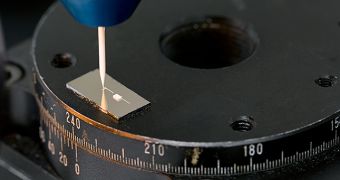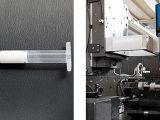One would think that 3D printing would not transform technology just a year or two after taking off, but it seems more and more likely that it will happen after all, if a certain Harvard scientist is right in her assumptions.
The name of that scientist is Jennifer Lewis. She has been using new tools and inks to create 3D printed batteries, and expects a mainstream launch to come soon.
Maybe it will happen as early as 2014, although it's doubtful that anything will be complete by January, when CES 2014 takes place in Las Vegas, Nevada (Consumer Electronics Show).
Lewis developed a technique that can 3D print batteries out of functional inks that solidify almost immediately after being molded. It consists of lithium nanoparticles.
The same technique can be used to make other simple components like electrodes, antennas and wires, though the material differs for each. The wires are made out of silver nanoparticles, for example.
And since the ink dries up so quickly, it should be easy to make a new battery in mere minutes.
Not only that, but Lewis' batteries are as small as one millimeter square, but can work as well as any conventional batteries.
All because the 3D printing technique allows her to render microscale architecture and ensure that the structures are positioned with 100-nanometer accuracy. Basically, she miniaturizes the layout of much larger batteries.
The new technology comes none too soon, as consumer electronics really need something like this to evolve to the next level.
CPUs, GPUs, controller ICs, RAM chips, NAND Flash memory, all semiconductors have been advancing, in manufacturing process and other areas.
This advancement has brought superior performance and better energy efficiency. Thus, to further score battery life gains, the batteries themselves need to get better, and Lewis has provided the world with a way to make it happen.
And, as a bonus, the much smaller battery size will enable smaller/thinner gadgets as well, not to mention speed up the production process (tens or even hundreds of printing nozzles could be used at the same time).

 14 DAY TRIAL //
14 DAY TRIAL // 
